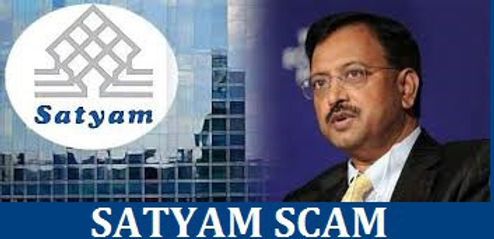Author: Prajwal G Karamallappanavar, Symbiosis Law School, Nagpur
To The Point
The CBI v. B. Ramalinga Raju & Ors. (2016) case, educated by the special code for CBI cases in Hyderabad, marks a watershed moment in India’s corporate governance landscape, addressing the infamous Satyam Computer Services Limited scam of 2009. The court convicted Ramalinga Raju, the company’s founder and chairman, and nine others for orchestrating a financial fraud of rupees 7136 crores by falsifying accounts and inflicting losses over several years. The case exposed systematic weaknesses in oversight and led to significant legal and regulatory Reforms. This Legal article examines the special code reasoning statutory provisions under the Indian Penal Code 1860 and the Companies Act 1956, relevant judicial precedents, and the implications for the decisions for corporate accountability and investor protection in India.
Abstract
The CBI v. B Ramalinga Raju and others 2015 case represents a landmark prosecution of one of India’s most significant corporate fraud cases, the Satyam Computer Services case 2009. Ramalinga Raju and others were convicted for manipulating financial reports, defrauding investors, and breaching fiduciary duties, causing a loss of 7136 crores. The case prosecuted by the Central Bureau of Investigation highlighted the lapses in corporate governance, auditing, and regulatory oversight. This case comment analyses the notable course comments findings, focusing on applying IPC provisions for cheating and forgery. The criminal conspiracy, along with the violation of the Companies Act, 1956, by exploring relevant precedents and the broader context of corporate governance, evaluates the impact of the decisions on India’s corporate governance frameworks, regulatory reforms, and the public trust in the corporate sector.
Use of legal jargon
The CBI v. B Ramalinga Raju and others (2015) case engages core legal principles under the IPC and the Companies Act, 1956. Terms such as cheating, forgery, criminal conspiracy, breach of trust and falsification of accounts are central to the court analysis of concepts like corporate governance, fiduciary duty, and financial misstatements. The public interest frames the discourse, reflecting the judiciary’s role in addressing corporate malfeasance. The case also involves persons under the Securities and Exchange Board of India Act, 1992 (SEBI Act), and the principle of auditing standards, highlighting the interplay between criminal liability and regulatory compliance in corporate fraud.
Background
The CBI v. B. Ramalinga Raju and others (2015) case steams from Satyam computer service limited scam, uncovered in January 2009, when Ramalinga Raju, the company chairman, Confused to falsify financial records for over seven years, a leading IT service firm, reported inflected revenues and fetishes assets worth of rupees 7136 crore misleading investors, clients, and the regulatory the fraud inward fake bank balance forged invoice, and manipulated books orchestrated by Raju his brother B Rama Raju managing director and a key executive, with a complicity from internal auditors and Price water house Cooper partner.
Following Raju’s confession, the Central Bureau of investigation (CBI) filed a chargesheet in April 2009, charging Raju and the nine others, including company executives and the auditors, under section 120 B criminal conspiracy, 420 cheating, 467 forgery of valuable security, 468 forgery for cheating, 471 using a forced documents, and 477 a falsification of accounts of the IPC read with section 211 and 628 of Company’s act, 1956 false statement the CBI alleged that the accused manipulated Sathyam’s banks to inflicted stock price, securing loans and conceal financial distress, defrauding stakeholders.
The defence argued that Raju acted alone, without a broader conspiracy, and that the fraud was an attempt to save the company from collapse, not a personal enrichment. They contested the auditor’s liability, claiming the reliance on the management–provided data. The prosecution countered with the advance of systematic collision, including forged documents and fictitious transactions implicating all the accused.
The Special Court, Hyderabad, was tasked with determining the accused criminal liability, the contest of the fraud, and its impact on the investors and the corporate sector. The case also overlapped with the Sebi investigation, civil suits, and Satyam’s acquisition by Tech Mahindra in 2009, to prevent collapse.
The Proof
The legal framework for the Satyam case conspiracy includes the IPC, the Companies Act, 1956, and the SEBI Act, 1992. Section 420 of the IPC defines cheating as inducing a person to deliver property through deception, while Section 467 addresses the forgery of valuable securities, such as financial records. 120B covers criminal conspiracy, requiring agreement to commit an offence. 477 to penalise falsification of the accounts by the company’s officers. Under the Companies Act 1956, section 211 manages accurate and fair financial statements, and section 628 imposes penalties for false statements.
The CBI presented evidence of rupees 3357, a forced invoice of 700, fictitious bank statements, and cash reserves, corroborated by the forensic audits and Raju’s confession. The prosecution highlighted the auditors’ failure to verify the bank balance independently, violating auditing standards. The accused’s action led to a 12-crore-rupee drop in Satyam’s market value, affecting 1.5 lakh shareholders and employees.
The defence argued that Raju’s confession was coincidental and that the scale of fraud was exaggerated. They claimed the auditors acted in good faith, relying on the management data, and that no enrichment occurred. The CBI countered with evidence of fund diversion to Raju family entities, such as Maytas properties, and accused them of coordinating efforts to cancel the fraud.
The court’s analysis focused on establishing the elements of cheating, forging and the conspiracy theories’ complicity and the approachability of the company’s act violation, considering the systematic impact of the fraud.
The Court’s Reasoning
On 30 April 2015, the special court convicted all ten accused, sentencing Ramaling Raju and B Rama Raju to seven years imprisonment and imposing fines up to 5 Cr rupees. Court reasoning is likely to proceed as follows:
Criminal conspiracy (Section 120 B, IPC)
The court held that the queues stated in the concert manipulated Satyam’s books, as evidenced by the coordinated efforts to forge invoices, inflated revenue, and mislead stakeholders. Raju’s confession, corroborated by the forensic evidence, established a common intent to deceive, fulfilling the conspiracy element.
Cheating and forgery (Section 420, 467, 468, 471, IPC)
The court found that the accused induced banks, investors, and the clients to engage with Satyam based on falsified financials, constituting cheating under section 420 the creation and the use of forced blank statements and use approached blank statements and invoice certified section 467, 468, and 471, as these documents were used to secure loans and inflicted stock price.
Falsification of our accounts (Section 477 A, IPC; Section 211, 628, of the Companies Act)
The court heard that the accused deliberately falsified the temp’s accounts, while violating section 477A and the Companies Act requirement for accurate financial statements. First, the manipulation cancelled the company’s economic distress, breaching fiduciary duty to shareholders.
Auditors’ liability
The court rejected the auditor’s defence of the good faith finding that PwC Partners failed to exercise due diligence by not verifying the blank balance independently. Their capacity to overlook discrepancies, which implicated them in the conspiracy, violated auditing standards under the Chartered Accountant Act, 1949.
Public interest incorporated governance
The code emphasised the fraud’s impact on India’s IT sector, investor confidence and the public interest. First, the rupees 7136 crores scam eroded trust in corporate governance, necessitating stringent penalties to deter future misconduct.
The court imposed a rigorous sentence and fine reflecting the magnitude of the fraud, and directed the pursuit of civil penalties, including disgorgement of wrongful gains.
Case Laws
Shri Ram Narayan vs Shimla Banking and Industrial Co Ltd. (1956)
The Supreme Court case clarified the liability for falsification of accounts, supporting the conviction under section 477A in the Sathyam case.
RK Dalmia vs Delhi Administration (1962)
The Supreme Court upheld a conviction for cop corporate fraud, emphasising promoters’ liability, which was relevant to Raju’s role in the Satyam scam.
State of Maharashtra vs Syndicate Bank (1995)
This case established bankers’ right to recover damages from defaulters, providing a context for Satyam’s impact on financial stakeholders.
SEBI vs Shriram Mutual Fund (2006)
The Supreme Court upheld SEBI’s authority to penalise financial misconduct, supporting parallel regulatory actions in the Satyam case.
CBI vs Keshab Mahindra (2011)
The case clarifies corporate criminal liability, reinforcing the court’s findings against Satyam’s executives and auditors.
Global perspective:
International corporate fraud cases provide context. Around 2000 and 11, the USA was involved in similar accounting fraud, misleading the Serbians, which led to the Serbian Oxygen Act 2002, enhancing oversight. The UK Polly Peak collapse in 1990 highlighted Oxley liability, akin to PWC’s roles in Satyam: cases _The need for robust governance, a lesson reflected in India’s post-Satyam reforms. However, India’s unique corporate landscape requires tailored solutions balancing growth with accountability.
Implications
The Sebi vs B Ramalinga Raju and others 2015 decision strengthened India’s framework for combating corporate fraud, holding promoters and auditors accountable for financial mismanagement. The conviction of a high-profile figure like Raju set a precedent for a detergent product, emphasising the criminal liability for breach of fiduciary duty. Case catalyse stories form a standard feature, including the Company Act 2013, which mandates stricter auditing standards, independent directors, and whistleblower protection.
The ruling highlights the regulatory gaps. SEBI and the Institution of Chartered Accountants of India face criticism for their delayed action in promoting disclosure norms, and the ICAI is revising auditing standards. Also, it impacted investor confidence, with the foreign institutional investor withdrawing 2000 crore post-scandal, underscoring the need for transparency.
The decision reforms the corporate sector’s importance of internal control and ethical governance. Increase the firms’ adoption of robust compliance mechanisms to prevent fraud. As civil recovery from Raju and others has been limited, the challenge remains, and the case remains a benchmark for addressing corporate malfeasance and shaping the Indian regulatory landscape.
Conclusion
CBI vs B Ramalinga Raju and others’ 2015 decision is pivotal in India’s corporate governance history, addressing the 7136 crore service scam with resolute judicial action. The special code conviction of Raya Malinga Raju and nine others for cheating, forgery and criminal conspiracy _the Judiciary Commitment to holding corporate wrongdoers acceptable by applying the IPC and companies act, 1956, and withdrawing a president like R.K Dalmia 1962, the code reaffirmed the principles of judicial duty and transparency essentially to corporate integrity.
The ruling implications are catalysing reforms like the Companies Act 2013 and SEBI’s enhanced oversight mechanism. It exposed well liberty in auditing and regulatory systems, supporting and prompting stricter compliance standards. However, the limited council recovery highlights enforcement challenges in emphasising the need for a repost mechanism to protect investors. The case remains a cautionary tale of India’s corporate sector, reinforcing the judiciary’s role in safeguarding public interest and ensuring corporate fraud meets the stagnant legal consequences in a dynamic economic landscape.
FAQS
What is the CBI v. B. Ramalinga Raju & Ors. 2015 case about?
The case involves the conviction of Ramalinga Raju and others for the rupees ₹7136 crore fraud involving the falsification of accounts and investor deception.
Why was the Sathyam Scam prosecuted?
The CBI prosecuted Raju and others for cheating, forcing, and falsifying the accounts, which defrauded universities and eroded trust in the corporate sector.
Which president influenced the decision?
Guesses like Sri Rama Narayan 1956, R.K. Dalmia 1962, and CBI versus Sriram Mutual funds 2006 supported the court’s findings on corporate fraud and liability.
How did the special court rule?
The code convicted all 10 accused, sentencing Raju to seven years imprisonment for four criminal conspiracy charges, and falsification under the IPC and the Company Act.
What are the implications of judgment?
The decision strengthened corporate accountability, catalysed firms like the Companies Act 2013, and highlighted the need for robust regulatory oversight.




